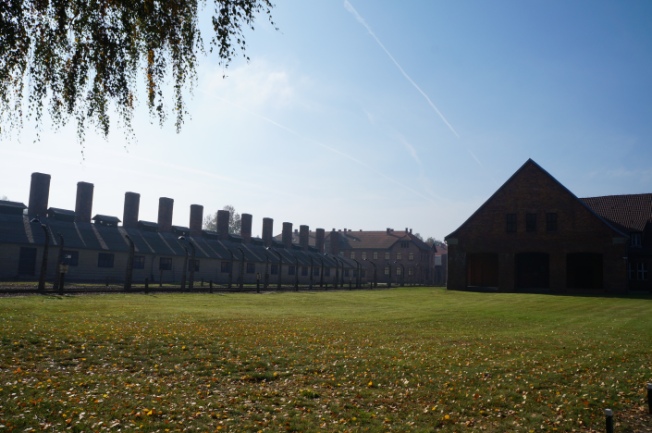On our final day in Poland, we once again signed up with Cracow Tours for a day tour (students have a discount!) to the Auschwitz-Birkenau concentration camps. The tour was supposed to last for 6 hours, meaning that it began in the morning and ended in the mid-afternoon. As such, it is advisable to bring along a packed lunch so that you won’t go hungry during the tour. As for us, we only brought along snacks for lunch (think chocolate waffle biscuits, potato chips and the like!). Not very healthy, obviously. 😛
Again, the meeting point was at the same place as yesterday (outside the tour office). During the bus ride to Auschwitz, there was a documentary screening from a small mounted TV, explaining the history behind Auschwitz. Although it was narrated in English, it was hard to focus on the screen due to its small size and I soon nodded off.
Auschwitz I
About an hour and a half later, we arrived at Auschwitz I, which was the original concentration camp first constructed to hold Polish political prisoners.
Auschwitz-Birkenau was the largest of the Nazi concentration and extermination camps. On the bus to Auschwitz, we passed by a building with a sign containing the word “Oświęcim” on it. I remembered thinking to myself that it sounded rather similar to Auschwitz! In fact, Auschwitz derived its German name from the nearby Polish town of Oświęcim.
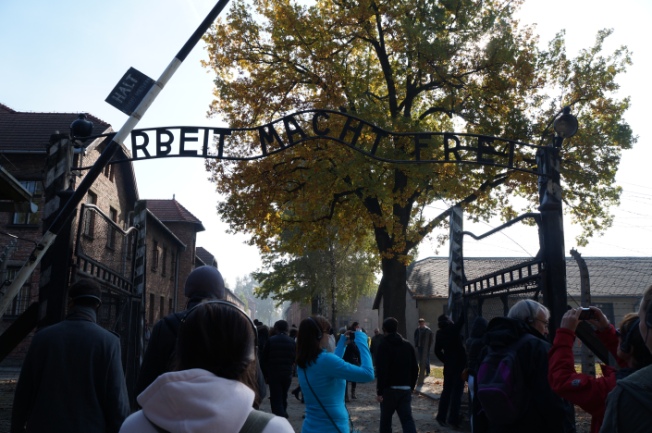
Arbeit macht frei
The very first thing we saw after collecting our audio guide and headphones (this is the main mode of communication between us and the tour guide, so the guide does not have to shout across the surroundings in order to make himself heard) was the metal sign containing the German slogan “Arbeit macht frei“, which roughly means “work makes you free”, which was erected by order of this guy called Rudolf Höss. This slogan, being espoused in a concentration camp no less, seemed ironic to me! However, the Wikipedia writeup about this quoted a source which had an interesting perspective on it:
“He seems not to have intended it as a mockery, nor even to have intended it literally, as a false promise that those who worked to exhaustion would eventually be released, but rather as a kind of mystical declaration that self-sacrifice in the form of endless labour does in itself bring a kind of spiritual freedom.” (Friedrich, 1994)
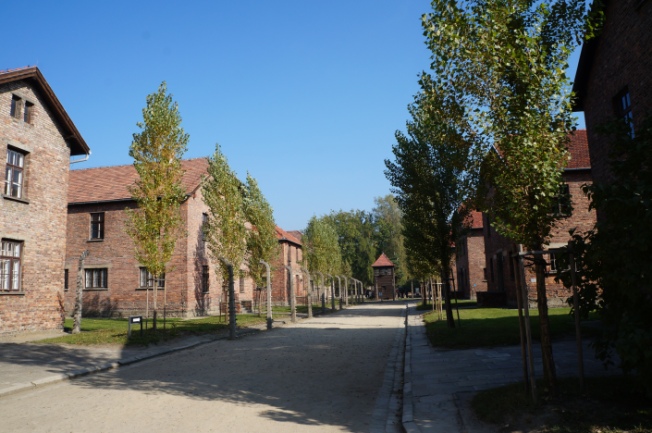
Just looking at the photos alone, it seemed incredulous to believe that this was once a place of bloodshed where at least 1.1 million lives were so brutally taken. However, an aura of somberness still hung in the air. There was no laughter or jokes as we walked through one of the blocks which was now a museum displaying photos taken during the war.
We visited several blocks, each of them containing chilling displays, such as mug shots of prisoners and prisoners’ belongings e.g. shoes and spectacles. The most eerie one was the mountain of shaved human hair. Photographs are not allowed for the hair, but I believe you can find a picture at the official site for Auschwitz.
We also visited a gas chamber. The guide explained that before the gassing, prisoners were told that they had to take a shower. The prisoners, unaware of their impending doom, were then led into the gas chamber, which was disguised as a shower facility. In there, pellets that emitted poisonous gases were dropped into the chamber via the roof, killing the people inside within 20 minutes. After everyone had died, other prisoners had to do the gruesome work of dragging the corpses out, removing personal belongings and shaving the hair before incinerating the bodies.
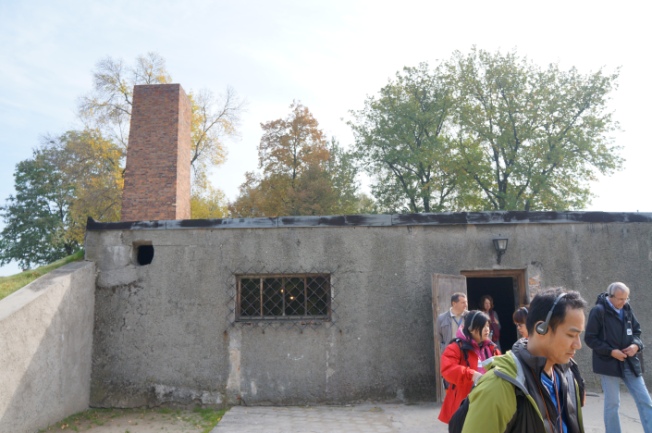
Auschwitz II – Birkenau
The tour then continued at Birkenau camp, which was a few minutes drive away from Auschwitz I. This camp was built to accommodate the increasing number of war prisoners and contained even more gas chambers.
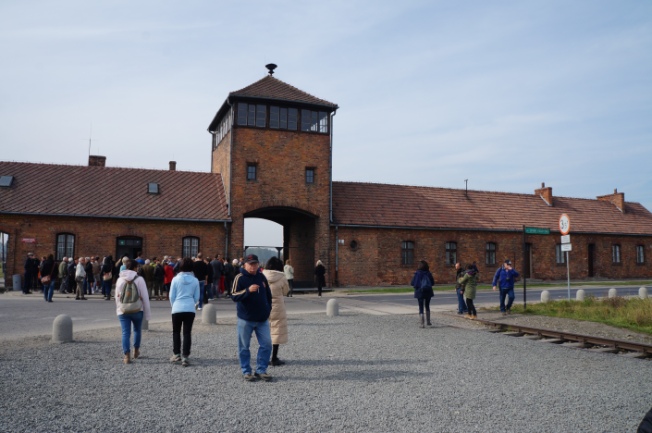
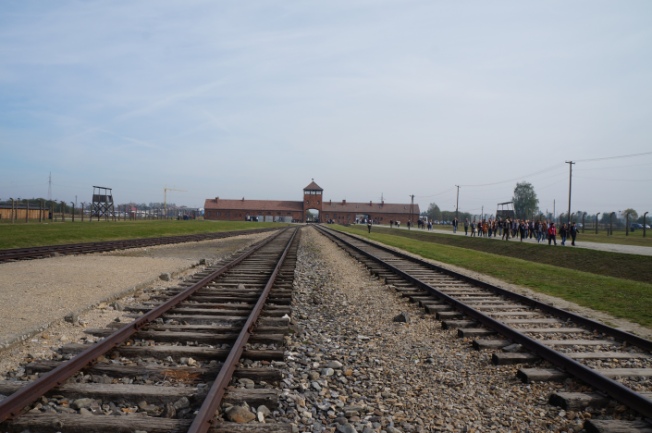
Prisoners were transported to Birkenau by rail. At the end of the tracks, they were sorted into groups. Those deemed to be fit for work were sent to the right and admitted into the camp, whereas those deemed unfit for work were sent to the left and immediately gassed. This included children, women with small children, the elderly and the sickly.
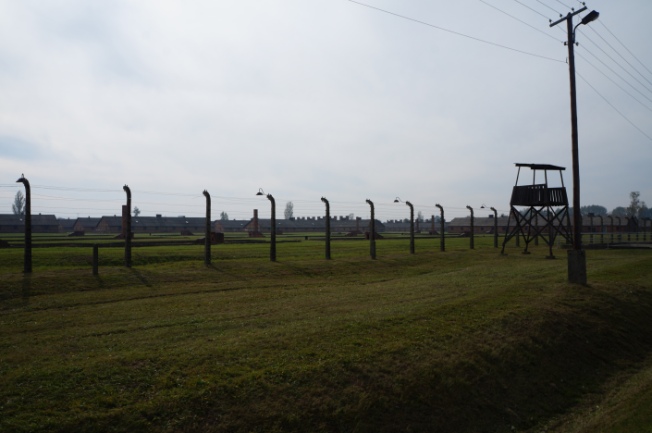
Beyond the fence, lone chimneys protrude from the ground, which mark the remains of the gas chambers in Birkenau. Before the defeat of the Nazis, they razed the chambers to the ground to destroy evidence of the horrors they created.
We were led into one of the blocks which was a mass toilet. Toilet bowls were lined up in a row in the middle of the room. The guide said that prisoners sentenced to clean the toilets were the “lucky” ones as the Nazi guards avoided it like the plague because they couldn’t stand the stench. Thus, the prisoners were safe from any random beatings throughout the day.

Female prisoners slept in the bunk as depicted above, which were just wooden shelves. At least 3 to 4 women had to share each shelf. Women who were allocated the topmost level were the luckiest, whereas women allocated the bottommost level (not the lowest shelf, but the ground beneath the shelf!) suffered from the cold and did not survive for long. When it rained, the sand turned into mud and flooded the entire floor.
Finally, the guide showed us a monument which fronted a compound of blocks. He explained that this was the site of medical experiments performed involuntarily on child prisoners by perverted German doctors. Easily hundreds of children’s lives were taken there.
Overall
This was one of the grimmest historical sites and definitely not a mainstream attraction where people go to enjoy. However, it is certainly very educational and I went away with a deeper appreciation of history.

